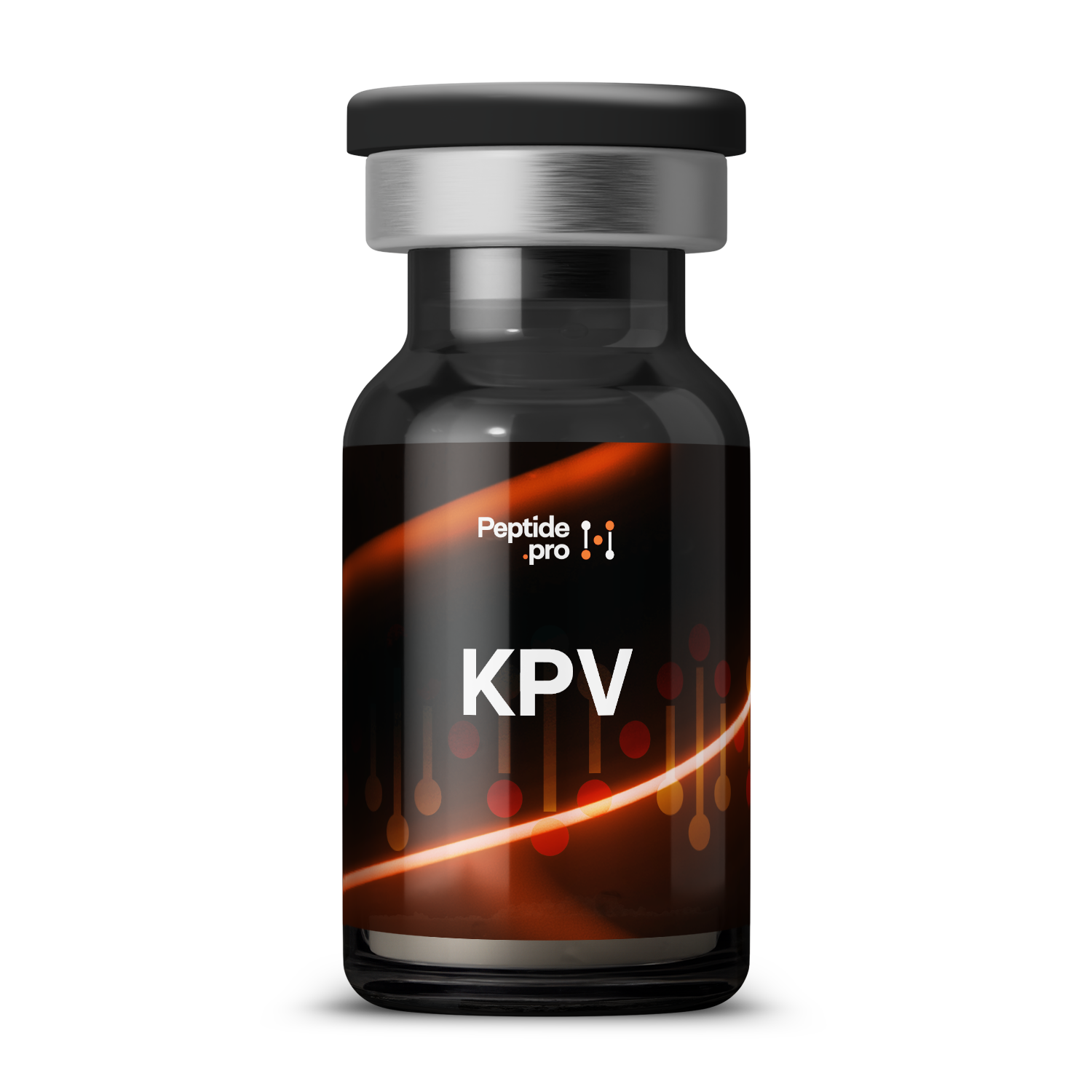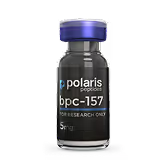Compound Overview
About the product
KPV consists of three natural amino acids in a linear sequence with free N- and C-termini. There are no additional chemical modifications. It is synthesized by Fmoc solid-phase peptide synthesis and purified by HPLC to ≥95 % purity. Identity and purity are confirmed by mass spectrometry.
KPV inhibits NF-κB (a key inflammatory transcription factor), reducing production of cytokines such as IL-1β and TNF-α. It does not activate melanocortin receptors, so it avoids effects on skin pigmentation. In models of skin, gut, and ocular inflammation, KPV dampens local inflammatory signaling without broadly suppressing immunity. Its action centers on restoring tissue homeostasis at sites of injury or irritation.
KPV peptide benefits are being explored across inflammatory-skin disorders, gastrointestinal inflammation, and ocular surface disease. In rosacea trials, KPV cream reduced redness and lesions over four weeks. Early ulcerative colitis research shows KPV enemas can lessen gut inflammation and improve mucosal healing. Investigations in dry-eye and conjunctivitis models report decreased ocular redness and discomfort. Human systemic-delivery studies are pending.
Reported adverse events are minimal, most often mild, transient irritation or itching at the application or infusion site. No systemic absorption or hormone-related effects have been observed in current human use. Safety in pregnancy, lactation, and long-term administration remains unestablished. A patch test or local-tolerance assessment is recommended in sensitive patients.
KPV is produced via Fmoc solid-phase peptide synthesis on a resin support. After assembly, it is cleaved and purified by preparative HPLC to research-grade purity. Mass spectrometry verifies correct sequence and molecular weight. Manufacturing follows research-grade compounding standards.
KPV is available only as a research-use ingredient and in cosmetic formulations under local regulations. It has no drug approval from the U.S. FDA, EMA, or similar bodies for medical use. Investigational formulations (topical, enemas, drops) are supplied under clinical-trial or equivalent frameworks. Over-the-counter products may include KPV only as a cosmetic, not as a treatment.
Topical products typically contain 0.5–2 % KPV, applied once or twice daily. Enema or rectal formulations in IBD studies have used concentrations around 0.1–0.5 %. Ocular drops in early research are dosed at 0.05–0.1 % several times daily. All regimens should follow approved investigational protocols.
- Do perform a patch or local-tolerance test before full-area application.
- Do follow the specific formulation’s dosing and administration guidelines.
- Don’t apply to broken or heavily inflamed skin without medical oversight.
- Don’t use systemic or rectal formulations outside clinical-trial settings.
- Q: Can KPV treat gut inflammation?
- A: Early trials in ulcerative colitis show reduced mucosal lesions with KPV enemas.
- Q: Is it effective in eye inflammation?
- A: Preliminary studies report reduced redness and discomfort with topical drops.
- Q: Does it affect skin color?
- A: No; KPV does not engage pigment receptors and has no whitening or tanning effect.
For research use only. Not approved for medical use.


